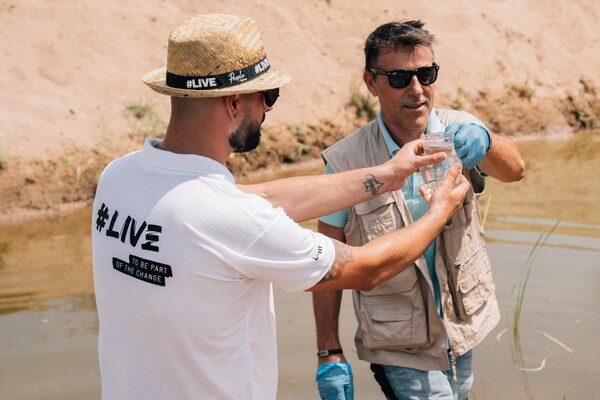Damm, the Barcelona Zoo Foundation and the Consorci del Delta del Llobregat once again introduce fartets in the Llobregat delta

This action is framed within the agreements signed by the three entities to protect biodiversity and create fartets population cores to ensure the specie's long-term viability
Damm, the Barcelona Zoo Foundation and the Consorci del Delta del Llobregat have released 100 fartets specimens in the Llobregat delta. This action is included in the current cooperation agreement in place between the three entities, and forms part of the "Salvem el fartet" educational plan, an initiative that aims to raise awareness regarding the situation of this Mediterranean fish, declared in danger of extinction.
Fartets, born in the Barcelona Zoo, have been released into two new ponds that were excavated this year with the help from the Viladecans City Council, which adhere to the depth and dimensional characteristics recommended by experts on this species for the purpose of maximizing the chances of a successful introduction.
Until now, the Llobregat delta had only two ponds with small, stable fartets populations, a species that finds itself in critical condition throughout the Iberian Peninsula, the area to which it is endemic. As such, the recovery plan for fartets in the Llobregat delta focuses on the creation of new population cores in several marshes to ensure species viability long-term.
Since 2021, Damm has been working with the Barcelona Zoo Foundation and the Consortium for the Protection and Management of Natural Species from the Delta del Llobregat to reintroduce the fartet back into its natural habitat.
The first habitat restoration effort was carried out in February 2019 with the excavation of a pond in the coastal pine forest of Prat de Llobregat, the same area that is home to the only settled fartet population. The positive results obtained are what has allowed for the further development of the two ponds that are currently home to one hundred new specimens.


